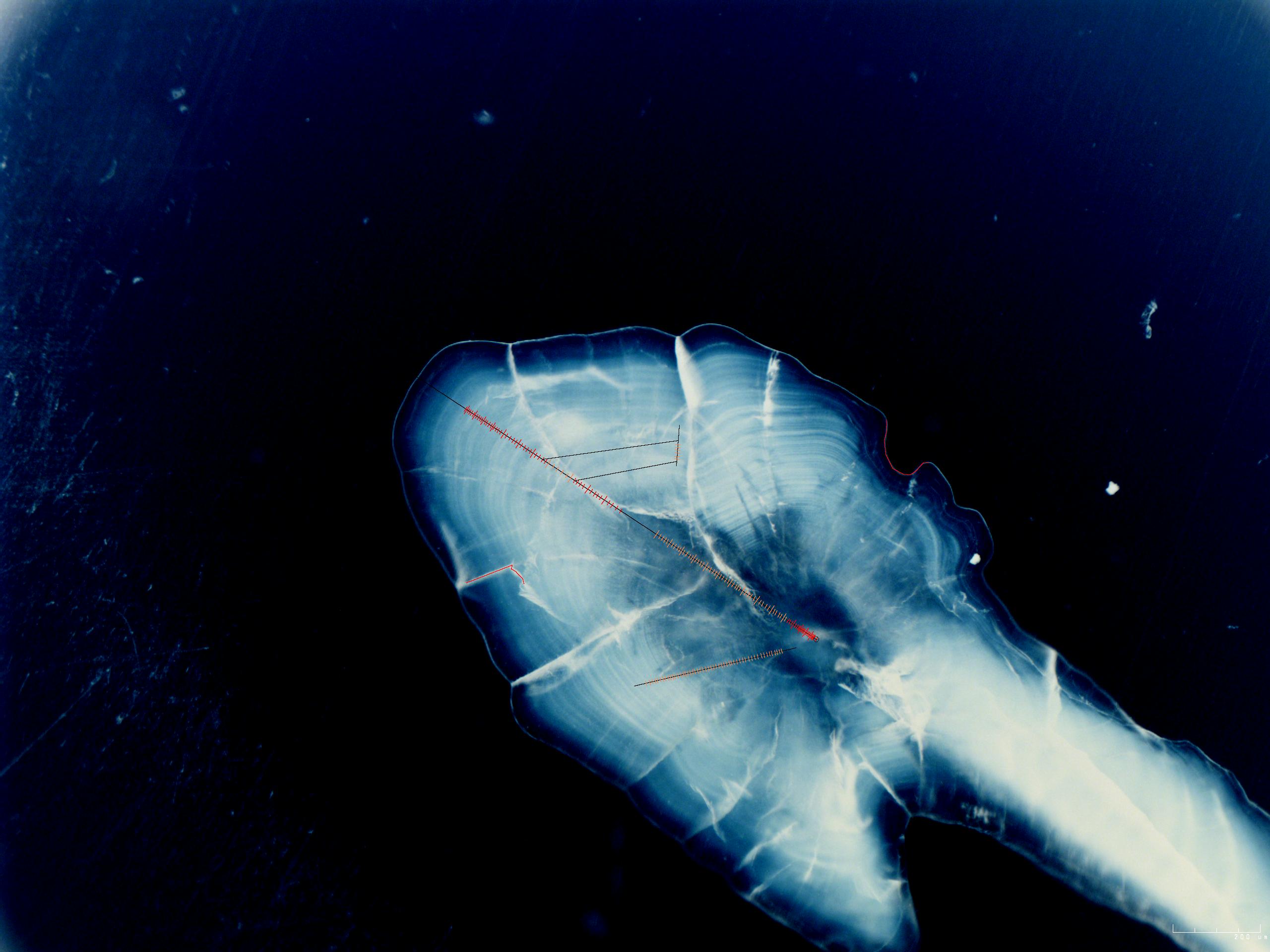Research (Tatsuya Sakamoto)
Estimating environmental history of Japanese sardine using otolith oxygen stable isotope analysis
What are the possible causes for the world-wide fluctuation of sardine stocks? and how are they related to marine environment?
In order to tackle this one of the greatest mysteries of the ocean, we are trying to reproduce the environmental history of Japanese sardine.
This has been made possible by otoliths, which oxygen stable isotope ratios depend on seawater temperature thereby suggests the environment sardines have lived through.
|
We are obtaining sardine samples from aquariums all over Japan.
|
We also collect some samples from field sampling.
|
Otoliths are extracted from the fish.
|
Step 1
|
|
Step 2
|
Step 3
|
Step 4
|
Steo 5
|
|
Step 6
|
Step 7
|
Step 8
|
Step 9
|
|
Step 10
|
Step 11
|
Step 12
|
Step 13
|
|
Extracted otoliths.
 |
Ring increments are measured.
 |
Daily rings.
 |
This is how we measure.
 |
|
Micromilling of otoliths is done using this machine.
|
Otoliths powder is collected with "a self-invented machine".
|
This is the otolith after milling.
 |
This is otolith powder.
 |
An example for analytical results.

